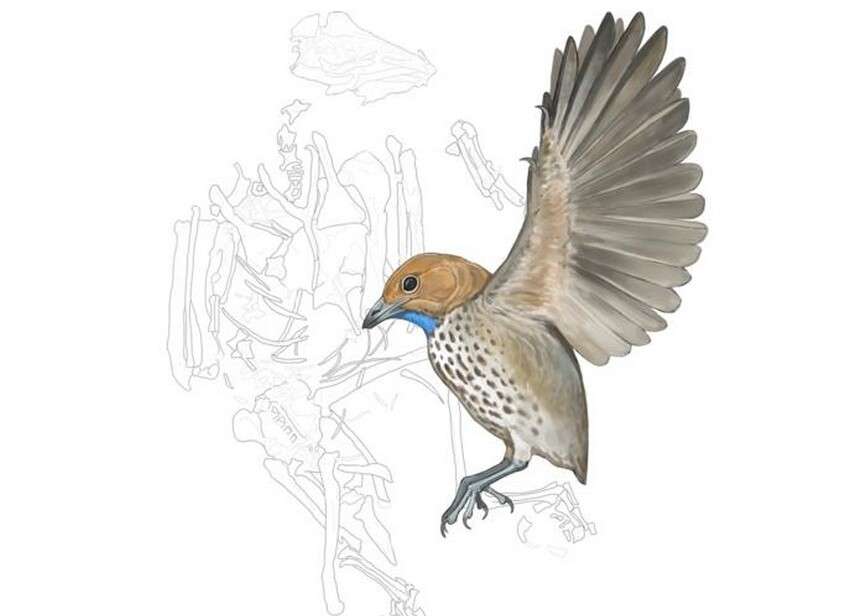Gray Whale, Extinct for Centuries in Atlantic, Is Spotted in Cape Cod
Aquarium scientists believe the gray whale seen off New England this month is the same whale sighted in Florida late last year.

No birds alive today have teeth. But that wasn't always the case—many early fossil birds had beaks full of sharp, tiny teeth.
Now though, in a paper in the journal Cretaceous Research, scientists have described a new species of bird that was the first of its kind to evolve toothless-ness; its name, in honor of naturalist Sir David Attenborough, means "Attenborough's strange bird."
"It is a great honor to have one's name attached to a fossil, particularly one as spectacular and important as this. It seems the history of birds is more complex than we knew," Sir David Attenborough said on the occasion.
All birds are dinosaurs, but not all dinosaurs fall into the specialized type of dinosaurs known as birds, sort of like how all squares are rectangles, but not all rectangles are squares. The newly described Imparavis attenboroughi is a bird, and therefore, also a dinosaur.
Imparavis attenboroughi was a member of a group of birds called enantiornithines, or "opposite birds," named for a feature in their shoulder joints that is "opposite" from what's seen in modern birds.
Enantiornithines were once the most diverse group of birds, but they went extinct 66 million years ago following the meteor impact that killed most of the dinosaurs. Scientists are still working to figure out why the enantiornithines went extinct and the ornithuromorphs, the group that gave rise to modern birds, survived.
"Enantiornithines are very weird. Most of them had teeth and still had clawed digits," said Alex Clark, a Ph.D. student at the University of Chicago and the Field Museum and the paper's corresponding author.
"If you were to go back in time 120 million years in northeastern China and walk around, you might have seen something that looked like a robin or a cardinal, but then it would open its mouth, and it would be filled with teeth, and it would raise its wing, and you would realize that it had little fingers."
"Scientists previously thought that the first record of toothlessness in this group was about 72 million years ago, in the late Cretaceous. This little guy, Imparavis, pushes that back by about 48 to 50 million years. So toothlessness, or edentulism, evolved much earlier in this group than we thought," says Clark.
The specimen was found by an amateur fossil collector near the village of Toudaoyingzi in northeastern China and donated to the Shandong Tianyu Museum of Nature.
During a visit to the Shandong Tianyu Museum, Clark's colleagues noticed unusual wing bones which have since been theorized as allowing for muscle attachments that let this bird flap its wings with extra power.
"We're potentially looking at really strong wing beats. Some features of the bones resemble those of modern birds like puffins or murres, which can flap crazy fast, or quails and pheasants, which are stout little birds but produce enough power to launch nearly vertically at a moment's notice when threatened," says Clark.
Meanwhile, the bird's toothless beak doesn't necessarily tell scientists what it was eating, since modern toothless birds have a wide variety of diets. Like its fellow enantiornithines, and unlike modern birds, it doesn't appear to have a digestive organ called a gizzard, or gastric mill, that helped it crush up its food.
"I like to think of these guys kind of acting like modern robins. They can perch in trees just fine, but for the most part, you see them foraging on the ground, hopping around and walking," Clark adds.
"It seems like most enantiornithines were pretty arboreal, but the differences in the forelimb structure of Imparavis suggest that even though it still probably lived in the trees, it maybe ventured down to the ground to feed, and that might mean it had a unique diet compared to other enantiornithines, which also might explain why it lost its teeth," said the Field Museum's associate curator, Jingmai O'Connor.
Clark said that nature documentaries by Sir David Attenborough, in which the renowned British naturalist narrates the behavior of different animals, were pivotal to his own interest in science.
"I most likely wouldn't be in the natural sciences if it weren't for David Attenborough's documentaries," he said.
SHARE This Young Man, A Strange Bird, And His Great Inspiration…
Be the first to comment